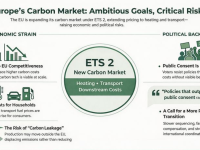In this episode of Hedging with Jorge, we continue our journey through the world of aluminium risk management and explore the basics of call and put options. Whether you are a producer, trader, or consumer, understanding these instruments is essential for managing price volatility in the aluminium market.
What does “At the Money” mean?
Let’s begin with the concept of an at-the-money (ATM) put option.
Suppose the prevailing aluminium futures price on the third Wednesday of December is $2,700 per tonne. If you set your option strike price at the same level $2,700 this is called an at-the-money put.
- In this case, you sell the option and receive a premium from the buyer.
- The buyer gets the right to sell aluminium to you at $2,700, exactly the current market level.
Now, what if you lower the strike price to $2,600 instead of $2,700? This makes it an out-of-the-money put. The buyer only has the right to sell to you at a lower price than the prevailing market. That means the premium you receive will be lower, since the buyer is taking the risk of the first $100 drop in price.
Understanding calls: The right to buy
On the other side, we have the call option, which gives the buyer the right to purchase aluminium at a predetermined price.
- If you buy a call at $2,700 (the prevailing price), it is an at-the-money call.
- To pay less premium, you can go out-of-the-money by setting the strike at $2,800. Here, you run the risk of the first $100 rise in price, but your premium is significantly lower.
This principle paying less for an option by accepting some initial risk is central to how producers and consumers use calls and puts in their hedging strategies.
Recap: At the money vs out of the money
- At the Money Put/Call: Strike price = prevailing market price ($2,700 in our example).
- Out of the Money Put: Strike price lower than market ($2,600).
- Out of the Money Call: Strike price higher than market ($2,800).
In both cases, the option premium is lower because the holder absorbs the initial $100 movement.
Setting up for the zero-cost collar
As we wrap up, remember that for an aluminium consumer, the natural position is to go long in the futures market essentially locking in purchases for future needs. Instead of just buying futures, consumers can build more sophisticated strategies:
- Sell an out-of-the-money put (e.g., $2,600).
- Buy an out-of-the-money call (e.g., $2,800).
Together, this creates the structure of a zero-cost collar, where premiums offset each other and risk is managed more efficiently.
In the next episode, we’ll put all these pieces together and see how consumers can use the zero-cost collar strategy to manage aluminium price risk effectively.














